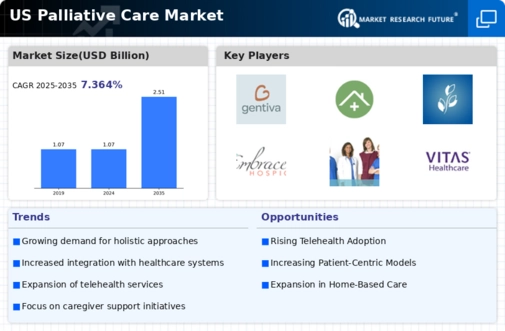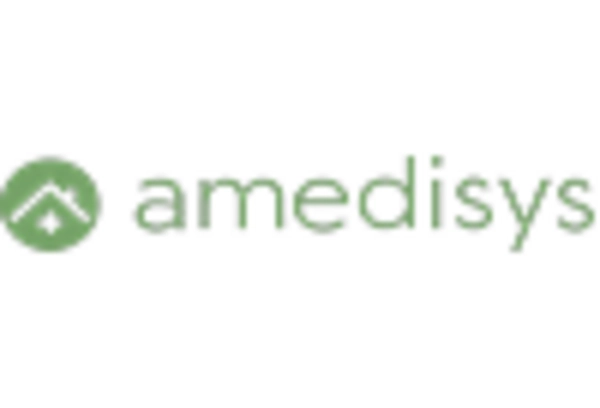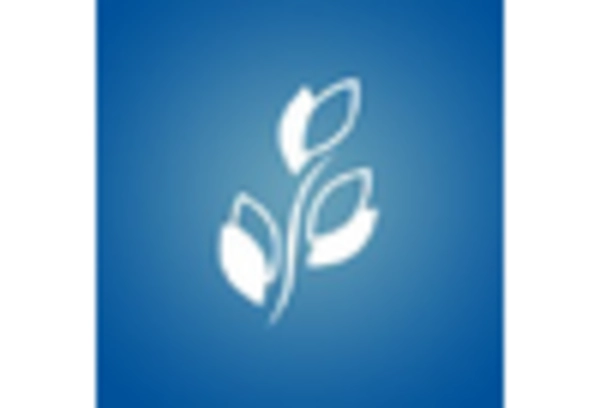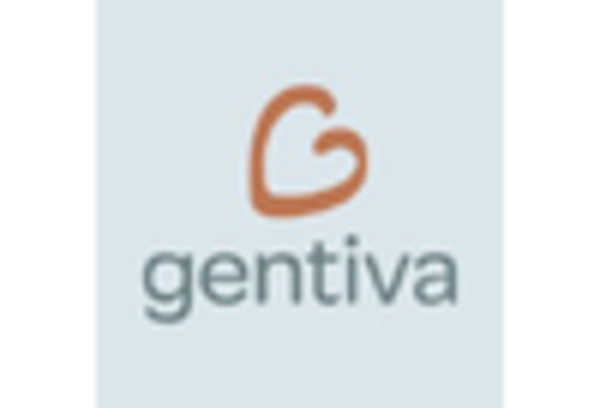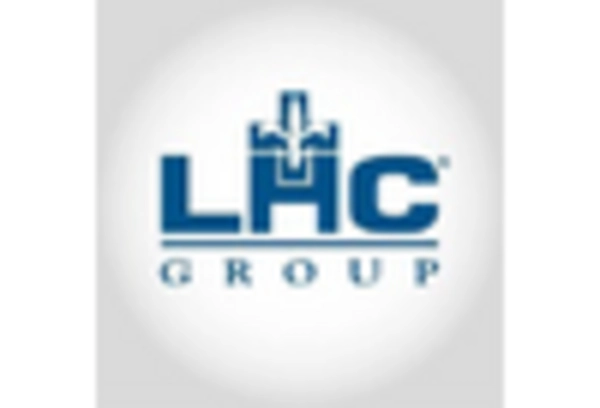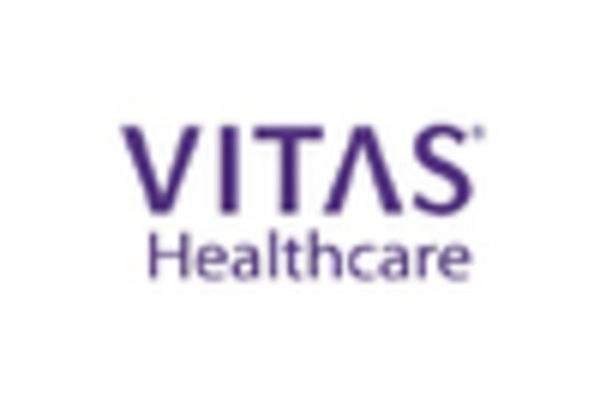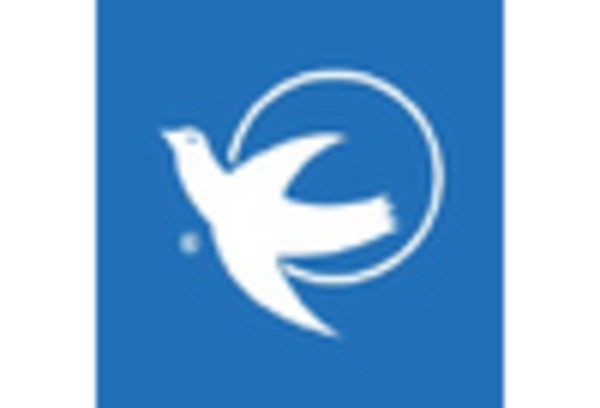Aging Population
The aging population in the United States is a primary driver of the palliative care market. As individuals age, they often experience chronic illnesses and complex health conditions that necessitate specialized care. By 2030, it is projected that approximately 20% of the U.S. population will be 65 years or older, leading to an increased demand for palliative care services. This demographic shift indicates a growing need for healthcare systems to adapt and provide comprehensive palliative care solutions. The palliative care market is likely to expand as healthcare providers recognize the importance of addressing the unique needs of older adults, ensuring they receive appropriate support and symptom management throughout their healthcare journey.
Rising Chronic Diseases
The prevalence of chronic diseases in the United States is a significant factor influencing the palliative care market. Conditions such as heart disease, cancer, and diabetes are on the rise, leading to a greater need for specialized care that focuses on quality of life. According to the Centers for Disease Control and Prevention (CDC), about 60% of adults in the U.S. have at least one chronic condition, which underscores the necessity for palliative care services. The palliative care market is responding to this trend by developing tailored programs that address the complex needs of patients with chronic illnesses, ultimately improving their overall well-being and satisfaction with care.
Technological Advancements
Technological advancements are playing a crucial role in shaping the palliative care market. Innovations in telehealth, electronic health records, and mobile health applications are enhancing the delivery of palliative care services. These technologies facilitate better communication between patients, families, and healthcare providers, ensuring that care is coordinated and responsive to individual needs. The palliative care market is likely to see increased adoption of these technologies, which can improve patient outcomes and streamline care processes. As technology continues to evolve, it may further transform how palliative care is delivered, making it more efficient and accessible for patients across the United States.
Policy and Reimbursement Changes
Recent policy changes and improvements in reimbursement structures are positively impacting the palliative care market. The Centers for Medicare & Medicaid Services (CMS) has expanded coverage for palliative care services, making them more accessible to patients. This shift in policy is likely to encourage healthcare providers to offer palliative care as a standard component of treatment for patients with serious illnesses. The palliative care market is poised for growth as reimbursement models evolve, allowing for better financial support for both providers and patients. This trend may lead to increased investment in palliative care programs and services across various healthcare settings.
Increased Awareness and Education
There is a growing awareness and understanding of palliative care among healthcare professionals and the general public, which is driving the market forward. Educational initiatives and campaigns have been implemented to inform stakeholders about the benefits of palliative care, emphasizing its role in enhancing the quality of life for patients with serious illnesses. This increased awareness is likely to lead to more healthcare providers integrating palliative care into their practice. The palliative care market is benefiting from this trend, as more patients and families seek out these services, recognizing their value in managing symptoms and providing holistic support.


